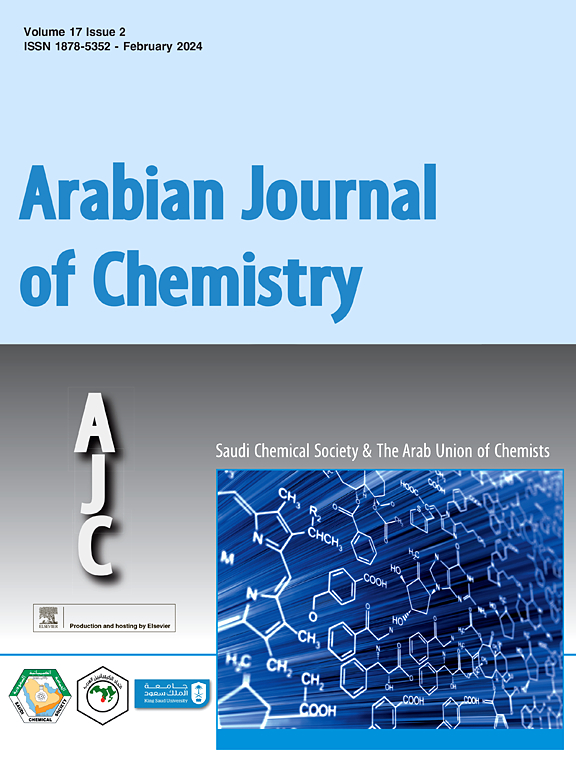Brief review on stab and cut protection materials: Material science physics and applications
IF 5.2
2区 化学
Q2 CHEMISTRY, MULTIDISCIPLINARY
引用次数: 0
Abstract
Sharp object injuries affect a large number of people worldwide each year, including members of the public, doctors, nurses, security personnel, industrial specialists, and culinary staff. According to the USA National Crime Information Centre NCICCodeManual (September 2024): An instrument, weapon, or machine with an edge that can cut, puncture, stab, slash, chop, slice, push, or penetrate surfaces or materials is considered an EBLADE. Hence, protective clothing is essential to prevent the cuts to key organs and arteries, rapid blood loss, and eventual shock-induced deaths to save human casualties from any EBLADE circumstances. The difference between Stab and Cut protection is clearly mentioned with reference to common international standards used till 2024. This brief and comprehensive review has 8 sections, each of which focuses on a distinct facet of the protective materials. Abrasion, cut, tear, puncture, impact resistance, flexibility, and ergonomics are critical considerations for any protective clothing. Thus, we focused on the common materials of stab and cut protection such as Aramid (Kevlar®), Polyethylene (Dynema®), Polyester (PE), Polyamide (PA, Nylon), Carbon Fibres (CF), Composites, Steel fibre (or mesh) and Glass fibres. Kevlar and Dyneema are at the best materials, providing exceptional strength-to-weight ratios while delivering necessary cut and puncture resistance. To inspire further research, the preparation and properties of some of these materials are explained. The typical protective clothing standards (European, International, and USA) are presented with possible usage in different scenarios. Some manufacturers are mentioned to connect the researchers, industry, and users. In summary, this brief review comprehensively explains the important material science and physics that can inspire and help scientists, researchers, industry, and users of protective articles of clothing.

刺切防护材料综述:材料科学、物理及应用
全世界每年都有很多人受到尖锐物体的伤害,包括公众、医生、护士、保安人员、工业专家和烹饪人员。根据美国国家犯罪信息中心NCICCodeManual(2024年9月):具有切割,穿刺,刺伤,划伤,切碎,切片,推动或穿透表面或材料的边缘的仪器,武器或机器被认为是EBLADE。因此,防护服对于防止关键器官和动脉的割伤、快速失血和最终的休克死亡至关重要,从而避免任何EBLADE情况下的人员伤亡。根据2024年之前使用的国际通用标准,明确提到了刺伤和割伤保护的区别。这篇简短而全面的评论有8个部分,每个部分都侧重于保护材料的一个不同方面。磨损,切割,撕裂,穿刺,抗冲击性,灵活性和人体工程学是任何防护服的关键考虑因素。因此,我们专注于常见的刺伤和割伤防护材料,如芳纶(凯夫拉®),聚乙烯(Dynema®),聚酯(PE),聚酰胺(PA,尼龙),碳纤维(CF),复合材料,钢纤维(或网)和玻璃纤维。凯夫拉和Dyneema是最好的材料,提供卓越的强度重量比,同时提供必要的切割和穿刺阻力。为了启发进一步的研究,本文对其中一些材料的制备方法和性能进行了说明。介绍了典型的防护服标准(欧洲、国际和美国),以及在不同情况下可能的使用方法。一些制造商被提到连接研究人员,行业和用户。总之,这篇简短的综述全面地解释了重要的材料科学和物理学,可以启发和帮助科学家、研究人员、工业和防护用品的服装用户。
本文章由计算机程序翻译,如有差异,请以英文原文为准。
求助全文
约1分钟内获得全文
求助全文
来源期刊

Arabian Journal of Chemistry
CHEMISTRY, MULTIDISCIPLINARY-
CiteScore
10.80
自引率
3.30%
发文量
763
审稿时长
63 days
期刊介绍:
The Arabian Journal of Chemistry is an English language, peer-reviewed scholarly publication in the area of chemistry. The Arabian Journal of Chemistry publishes original papers, reviews and short reports on, but not limited to: inorganic, physical, organic, analytical and biochemistry.
The Arabian Journal of Chemistry is issued by the Arab Union of Chemists and is published by King Saud University together with the Saudi Chemical Society in collaboration with Elsevier and is edited by an international group of eminent researchers.
 求助内容:
求助内容: 应助结果提醒方式:
应助结果提醒方式:


